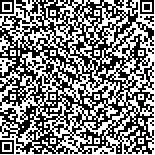武欢,张照庆,居诗如,等.电针结合有氧训练对高脂血症大鼠胆固醇逆转运及其炎症反应的影响[J].中华物理医学与康复杂志,2024,46(8):680-686
扫码阅读全文

|
| 电针结合有氧训练对高脂血症大鼠胆固醇逆转运及其炎症反应的影响 |
|
| |
| DOI:10.3760/cma.j.issn.0254-1424.2024.08.002 |
| 中文关键词: 高脂血症 电针 有氧训练 胆固醇逆转运 炎症反应 |
| 英文关键词: Hyperlipidemia Electroacupuncture Aerobic exercise Reverse cholesterol transport Inflammation |
| 基金项目:国家自然科学基金(82274633);湖北省自然科学基金(2022CFB468);武汉市卫生健康委医学科研项目(WZ19Q09) |
|
| 摘要点击次数: 2896 |
| 全文下载次数: 3034 |
| 中文摘要: |
| 目的 观察电针结合有氧训练对高脂血症大鼠肝脏胆固醇逆转运相关基因小凹蛋白1(Caveolin-1)、清道夫受体B组I型(SR-BI)、ATP结合盒转运子A1(ABCA1)表达水平和主动脉弓核转录因子κBp65(NF-κBp65)、环氧化酶2(COX-2)、肿瘤坏死因子α(TNF-α)的影响。 方法 选取无特定病原体(SPF)级雄性SD大鼠30只,按随机数字表法将其分为空白组,模型组和电针结合有氧训练组,每组10只大鼠。模型组和电针结合有氧训练组喂高脂饲料建立高脂模型。模型组和空白组不接受任何干预,电针结合有氧训练组大鼠先取双侧丰隆穴及阴陵泉穴进行电针治疗,每日1次,每次30 min,然后进行无负重游泳训练,每日1次,每次60 min,连续干预4周。于模型组和电针结合有氧训练组造模成功后即刻和电针结合有氧训练组干预结束后当天对3组大鼠进行尾静脉采血,测定其血脂水平。于电针结合有氧训练组干预结束后第二天取3组大鼠肝脏和主动脉弓,采用苏木精伊红(HE)染色法观察其肝脏和主动脉弓脂质沉积和炎症浸润程度,采用实时聚合酶链式反应(RT-PCR)和蛋白印迹法(Western Blot)法分别观察肝脏Caveolin-1、SR-BI、ABCA1和NF-κBp65、COX-2、TNF-α的mRNA和蛋白的表达水平。 结果 造模成功后,与空白组比较,模型组大鼠的总胆固醇(TC)、低密度脂蛋白胆固醇(LDL-C)水平均显著上升,高密度脂蛋白胆固醇(HDL-C)则显著下降(P<0.01),其肝脏Caveolin-1、SR-BI、ABCA1的蛋白和mRNA表达亦显著下降(P<0.01),主动脉弓NF-κBp65、TNF-α、COX-2、COX-2的蛋白和mRNA的表达则显著上升(P<0.01)。与模型组比较,电针结合有氧训练组干预后,其TC、LDL-C水平显著降低(P<0.01),HDL-C显著升高(P<0.05),肝脏Caveolin-1、SR-BI、ABCA1的蛋白及mRNA均显著上调(P<0.05),主动脉弓NF-κBp65、TNF-α、COX-2的蛋白和mRNA表达均显著下降(P<0.05)。 结论 电针结合有氧训练可促进高脂血症大鼠胆固醇逆向转运,抑制内皮细胞炎症反应,从而改善高脂血症,其机制可能与电针结合有氧训练可促进肝脏Caveolin-1的表达,上调胆固醇逆向转运基因SR-BI、ABCA1表达,下调炎症因子NF-κBp65、COX-2及TNF-2的表达有关。 |
| 英文摘要: |
| Objective To observe any effect of combining electro-acupuncture with aerobic exercise on the expression of SR-BI receptor and caveolin-1 and ABCA1 proteins in the liver and on reverse cholesterol transport. Any relationship with inflammatory factors NF-κBp65, COX-2 and TNF-α in the aortic arch was also investigated. Methods Thirty male SPF Sprague-Dawley rats were randomly divided into a normal group (NG), a model group (MG), and a group which received electro-acupuncture combined with aerobic exercise (the EAG group), each of 10. A hyperlipidemia model was induced in the rats of the MG and EAG groups by feeding a high-fat diet. For 4 weeks the EAG group received 30 minutes of electroacupuncture daily (frequencies of sparse/dense waves 2/100Hz,1mA) at the ST40 and SP9 acupoints, followed by 60 minutes of no weight bearing swimming. No intervention was applied to the other groups. Before and after the intervention, serum was collected to observe lipid levels. Liver and aortic arch issue were resected to measure lipid deposition and inflammation using hematoxylin eosin staining. Caveolin-1, SR-BI and ABCA1 in the liver and NF-κBp65, COX-2 and TNF-α in the aortic arch were quantified using real-time PCRs and western blotting. Results After successful modeling the levels of total cholesterol (TC) and low density lipoprotein cholesterol (LDL-C), and the protein and mRNA expressions of NF-κBp65, TNF-α, COX-2 and COX-2 in the aortic arches of the MG had increased significantly. High density lipoprotein cholesterol (HDL-C) and the protein and mRNA expressions of caveolin-1, SR-BI and ABCA1 in the liver had decreased significantly. Compared with the MG, the levels of TC and LDL-C, as well as the protein and mRNA expressions of NF-κBp65, TNF-α, COX-2 and COX-2 in the aortic arches of the EAG had decreased significantly, while the average HDL-C l level, as well as the protein and mRNA of caveolin-1, SR-BI and ABCA1 in the liver were up-regulated significantly. Conclusions Electroacupuncture combined with aerobic exercise can relieve hyperlipidemia through promoting cholesterol reverse transport and inhibiting inflammation in endothelial cells. Those effects may be related to up-regulating the expression of caveolin-1, SR-BI and ABCA1 in the liver and down-regulating inflammatory factors in the aortic arch. |
|
查看全文
查看/发表评论 下载PDF阅读器 |
| 关闭 |
|
|
|